Clogged toilets are disturbing tasks in every house. Knowing the reasons for clogging can help us tackle the issue. If the toilet is clogged and you do not have a plunger for unclogging, there are other ways to tackle this issue. So, if you’re feeling helpless in the face of a clogged bathroom, read on to find out how to unclog a toilet without a plunger.
Understanding the Causes of Toilet Clogs
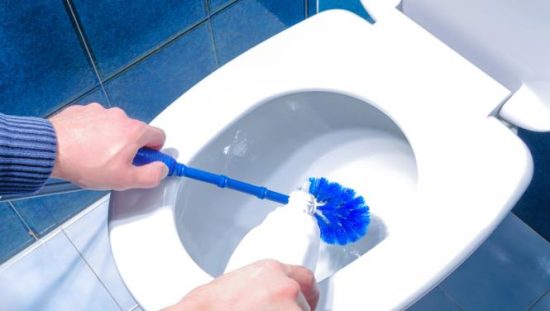
Before Knowing the solutions, it’s important to understand why toilets get clogged in the first place.
1. Excess Use of Toilet Paper
Using too much toilet paper per flush can quickly overload the toilet’s ability to pass waste. This is especially problematic in older or low-flow toilets which are not designed to handle large volumes at once. To prevent such clogs, it is advisable to use toilet paper sparingly and consider flushing twice if necessary, rather than trying to flush all waste and paper in one go.
2. Flushing the Items that are not Supposed to Flush
Many products marketed as ‘flushable’ such as certain wipes and feminine hygiene products are actually a common cause of blockages. Unlike toilet paper, these items do not disintegrate quickly and can gather in the plumbing, leading to serious clogs. Always check product labels and dispose of non-flushable items in a trash bin.
3. Mineral Buildup in Pipes
Hard water contains high levels of calcium and magnesium, which can deposit inside pipes and progressively narrow the internal diameter, restricting flow and increasing the likelihood of clogs. Installing a water softener system can reduce mineral buildup, and periodically using cleansing agents designed to remove such deposits can help maintain clear pipes.
4. Foreign Objects
Small objects can accidentally fall into the toilet and become lodged in the internal plumbing. Items like toys, dental floss, hair, and even small bathroom items can escape into the drain and are difficult to retrieve. It’s crucial to keep such items away from the toilet and to educate children about what should not be flushed.
5. Tree Roots
Tree roots are naturally drawn towards the moisture and nutrients found in sewer lines. Over time, they can invade cracks in the piping and grow inside, causing major blockages. This problem can be mitigated by regular inspection of the external plumbing and possibly rerouting pipes away from large trees or removing trees that pose a risk to the plumbing system.
Tools We Need to Unclog a Toilet Without a Plunger
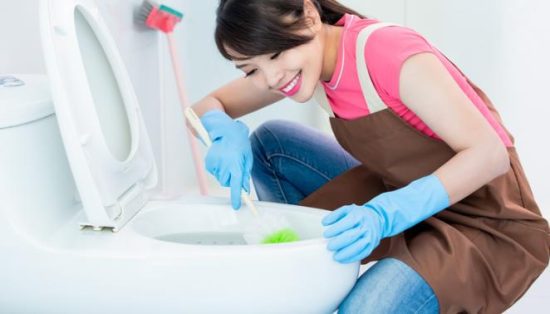
Here are the tools mentioned in the methods for unclogging a toilet without using a plunger:
- Dish soap
- Bucket (for hot water)
- Baking soda
- Vinegar
- Wire hanger (to be used as a makeshift snake)
- Toilet brush
- Enzyme-based cleaner
- Plumbing snake (also known as a drain auger)
- Kettle or pot (for boiling water)
- Wet/dry vacuum
Safety Precautions While Unclogging the Toilet
When attempting to unclog a toilet, safety is paramount to avoid unnecessary mess and exposure to potentially harmful substances. Here are the key safety precautions you should take:
- Wear Protective Gear
- Rubber Gloves: These are essential for protecting your hands from harmful bacteria and germs. Gloves also provide a barrier against any cleaning chemicals or unsanitary materials you might encounter.
- Remove as Much Water as Possible
- Small Disposable Cup: Before beginning any unclogging method, it’s advisable to remove as much water from the toilet bowl as you can. This reduces the likelihood of splashing contaminated water during the unclogging process. Use a disposable cup to scoop out the water and dispose of it properly.
- Ventilate the Bathroom
- Vent or Window: Ensure the area is well-ventilated to mitigate any unpleasant odors or harmful fumes, especially if you’re using chemical cleaners. Turn on the bathroom’s ventilation fan or open a window to maintain airflow.
- Turn Off the Water
- Shut-off Valve: Before starting the unclogging process, locate and turn off the water supply to the toilet. This valve is typically found near the base of the toilet. Turning off the water prevents the toilet from refilling and avoids potential overflows as you work.
- Grab a Bucket and Towels
- Bucket and Old Towels: Keep these items handy to catch any overflow or spills. This can help contain the mess and make cleanup easier and quicker.
By following these safety precautions, you can protect yourself and ensure a cleaner and more controlled environment as you work to unclog the toilet. Each method may require additional specific tools or materials, so make sure you have everything you need before you begin.
How to Unclog a Toilet Without a Plunger?
1. Hot Water and Dish Soap
Method: Begin by squirting a liberal amount of dish soap directly into the toilet bowl, aiming for the drain hole where the clog is likely located. Next, heat a gallon of water to just below boiling (to avoid cracking the ceramic) and pour it into the bowl from about waist height to create a force that helps push the soap into the clog. Allow the mixture to sit for at least one hour to give the soap time to lubricate and the hot water time to soften the clog before attempting a flush.
Reasoning: The soap acts as a lubricant that helps to break down fats and other greasy components of the clog, while the hot water further softens more solid elements, making the clog easier to dislodge with a subsequent flush. This method is gentle on plumbing and effective for simple clogs.
2. Baking Soda and Vinegar
Method: Pour one cup of baking soda into the toilet bowl followed by two cups of white vinegar. The combination will react and start to fizz immediately. Let this bubbling mixture sit in the bowl for about 30 minutes to a few hours. The extended contact time allows the fizzing action of the baking soda and vinegar to mechanically break up the clog. After waiting, flush the toilet to rinse the pipes.
Reasoning: This reaction creates a significant amount of effervescence, which generates pressure and agitation within the clog, helping to break it apart. This method is environmentally friendly, does not harm plumbing, and is effective for dislodging organic waste.
3. Wire Hanger
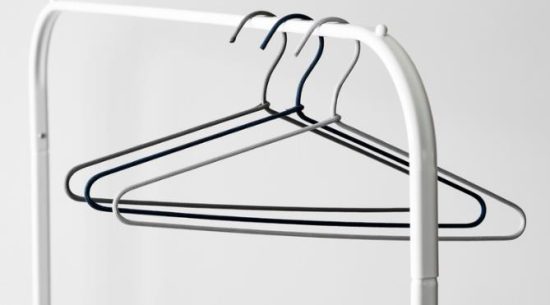
Method: Unravel a wire hanger to its fullest length and bend one end into a small hook. Carefully insert this hooked end into the toilet drain, using gentle pushing and rotating motions to reach and dislodge the clog. Move the hanger back and forth to break up the materials causing the blockage. Once you feel less resistance, pull the hanger out, which may bring some of the clogging material with it.
Reasoning: The wire hanger method acts like a manual auger, allowing for targeted poking and prodding of the clog. It’s particularly useful for reaching obstructions that are not too far down the toilet’s drain.
4. Toilet Brush
Method: Use a toilet brush as a pseudo-plunger. Push the brush into the drain hole and use a pumping motion to create pressure in the drain, similar to using a plunger. This can help to dislodge the clog. For more stubborn clogs, repeatedly shove the brush in and out of the hole, mimicking the action of a plunger to create a vacuum force.
Reasoning: This method can sometimes dislodge clogs that are close to the surface. The stiff bristles of the brush help break up the clog, and the force applied can push it through the plumbing.
5. Enzyme-based Cleaner
Method: Follow the instructions on the enzyme cleaner package, usually involving pouring a specified amount directly into the toilet bowl. Allow the solution to sit overnight or as directed—this gives the enzymes sufficient time to break down the organic matter. Flush the toilet in the morning or after the recommended period.
Reasoning: Enzyme-based cleaners work by using natural bacteria to digest organic waste, effectively eating away at the clog without damaging the pipes. This method is ideal for regular maintenance as it also helps maintain clean pipes.
6. Plumbing Snake
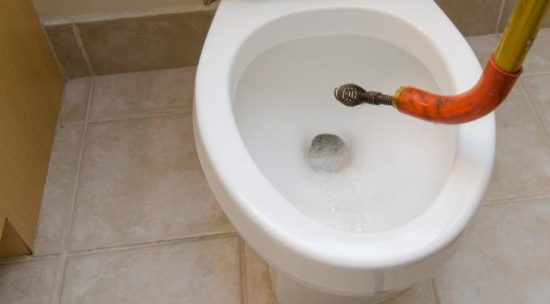
Method: Insert the tip of the snake into the toilet bowl, pushing it down while turning the handle to extend the snake through the drain until it reaches the clog. Rotate the snake against the clog, which can help break it up or hook onto it to pull it out. Retract the snake once the resistance lessens and the water begins to drain.
Reasoning: A plumbing snake is designed to physically navigate through the twists and turns of toilet plumbing, allowing it to reach deeper clogs that chemicals or simpler methods cannot address. It’s effective at breaking up or retrieving clogs without the use of harsh chemicals.
7. Boiling Water
Method: Heat water until it is boiling, then let it cool slightly. Carefully pour the hot water into the toilet bowl from a height to increase the force of the water hitting the clog. The heat helps soften the clog while the force helps push it down the pipes. Follow with a normal flush once the water level lowers.
Reasoning: The heat from the hot water can break down the organic material making up the clog, making it easier to flush away. This method should be used cautiously to prevent porcelain from cracking when in too hot water.
8. Wet/Dry Vacuum
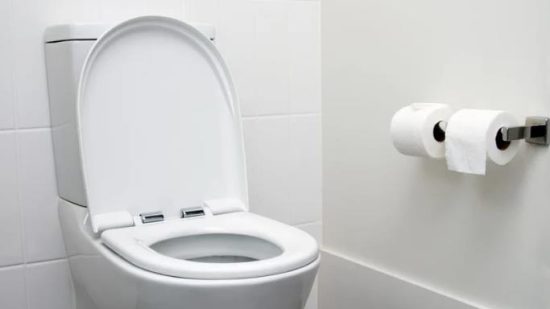
Method: Set up the vacuum to handle liquids and securely attach the hose to the air intake, not the exhaust. Place the hose end tightly against the toilet drain to create a seal. Turn on the vacuum to suck out the water along with the clogging materials. Once the obstruction is cleared and the water level normalizes, turn off the vacuum.
Reasoning: This method effectively removes the blockage and the water, providing a direct solution to the clog. The vacuum’s strong suction can pull out materials that are difficult to dislodge by other non-mechanical means. Ensure to use a wet/dry vacuum as regular vacuums are not suited for liquid and can be damaged.
Conclusion
The clogging that happens to the toilet is an irritating issue, especially when a plunger is not readily available. By following the above methods, you can effectively unclog your toilet without needing a plunger. Remember to be patient and cautious when attempting these solutions, and always prioritize safety. With Proper concentration and patience, you can tackle even the toughest toilet clogs with ease. So, the next time you face a clogged toilet, don’t panic—try one of these eight methods instead!
Related Articles:
- How to Unclog a Toilet Fast and Easily?
- How To Install A Toilet?
- How to Remove a Toilet?
- How to Plunge a Toilet Like a Pro?
FAQ on how to unclog a toilet without a plunger
1. What reasons a toilet to clog?
Numerous factors cause the clog, including excessive toilet paper usage, flushing non-flushable objects, mineral buildup in pipes, restroom accessories accidentally dropped into the bathroom, and even tree roots penetrating outdoor plumbing structures.
2. Why should I unclog a toilet without a plunger?
Yes. Sometimes, a plunger is not accessible, expensive, and challenging to get when needed. Then, you have to go for alternative methods. Unclogging a toilet without a plunger can save time and money and the hassle of dealing with a stubborn clog.
3. Are there risks involved in unclogging a toilet without a plunger?
Usually, there are no risks when unclogging without a toilet. But we must be careful not to damage the toilet bowl or plumbing system. It’s essential to follow instructions carefully and proceed with caution.
4. How do I know which method to use?
The best method depends on the intensity of the clog and the tools you have available. Some methods, like hot water, dish soap, baking soda, and vinegar, are gentle and suitable for minor clogs. In contrast, others, like using a plumbing snake or wet/dry vacuum, are more effective for stubborn blockages.

